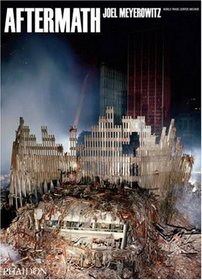Search -
Aftermath: World Trade Center Archive
Aftermath World Trade Center Archive
Author:
After September 11th, 2001, the Ground Zero site in New York City was classified as a crime scene and only those directly involved in the recovery efforts were allowed inside. The press was also prohibited from the site, but with the help of the Museum of the City of New York and sympathetic city officials, award-winning photographer Joel Meyero... more »
Author:
After September 11th, 2001, the Ground Zero site in New York City was classified as a crime scene and only those directly involved in the recovery efforts were allowed inside. The press was also prohibited from the site, but with the help of the Museum of the City of New York and sympathetic city officials, award-winning photographer Joel Meyero... more »
ISBN-13: 9780714846552
ISBN-10: 0714846554
Publication Date: 8/25/2006
Pages: 350
Rating: ?
ISBN-10: 0714846554
Publication Date: 8/25/2006
Pages: 350
Rating: ?
0 stars, based on 0 rating
Genres:
- Arts & Photography >> Photography & Video >> General
- Arts & Photography >> Photography & Video >> History
- Arts & Photography >> Photography & Video >> Photographers, A-Z >> General
- Arts & Photography >> Photography & Video >> Photo Essays
- Arts & Photography >> Photography & Video >> Photojournalism
- History >> Americas >> United States >> 20th Century >> 1945 - Present




